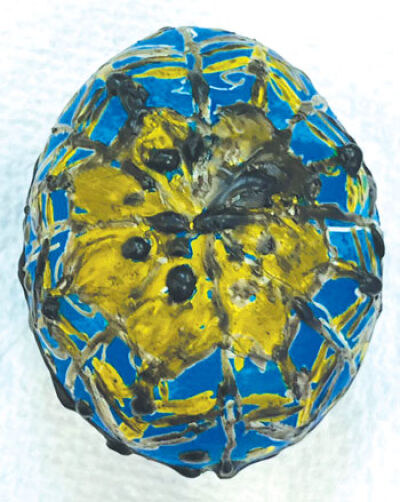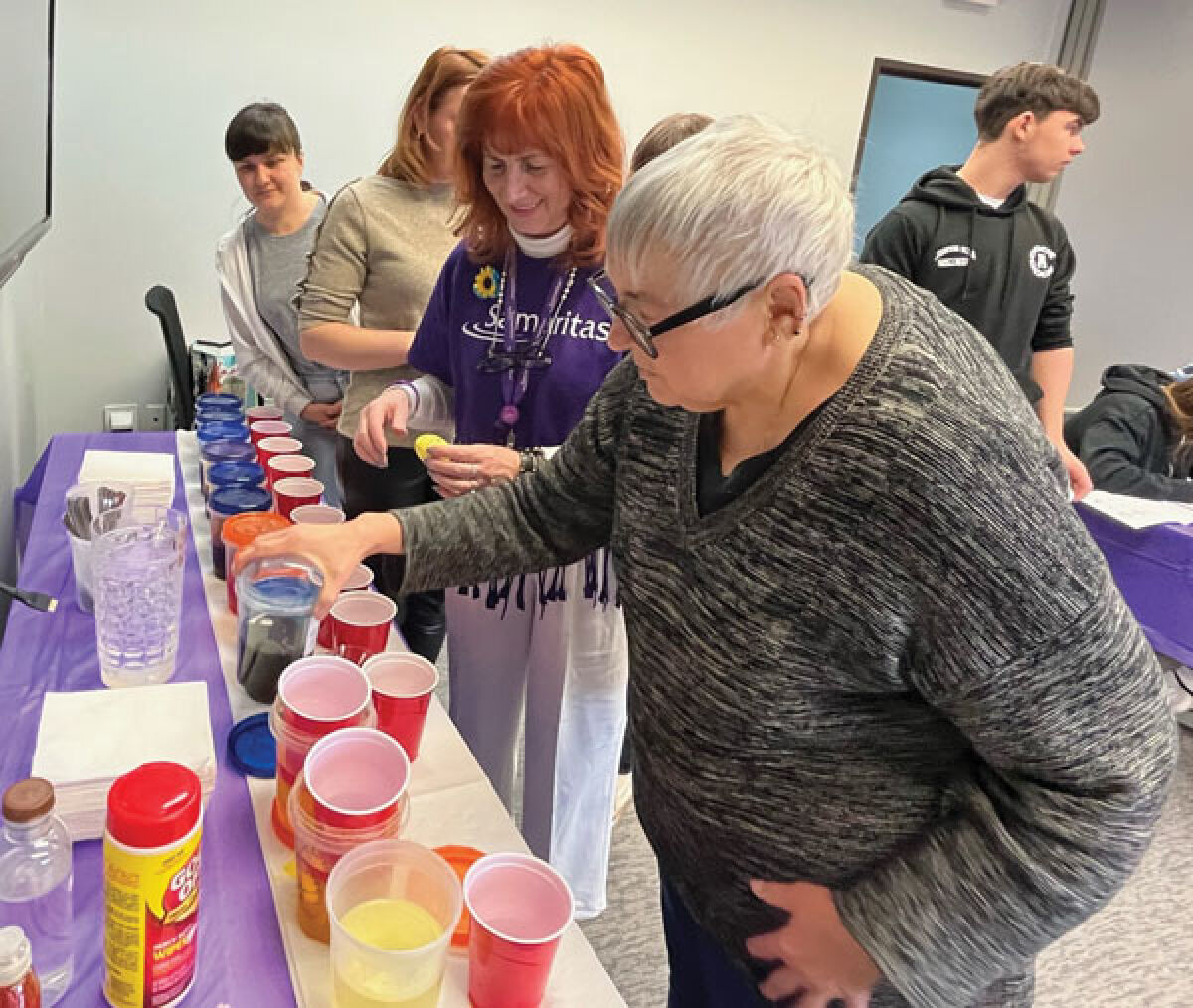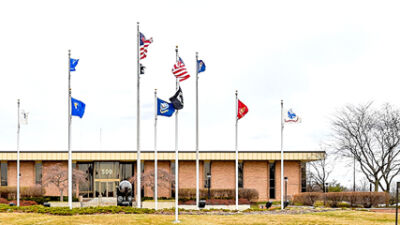
Pysanka is a Ukrainian tradition of decorating an egg to serve as a talisman to help protect a home.
Photo by Brendan Losinski
TROY — A Ukrainian tradition is continuing on, thanks to experts on the country’s heritage and a little help from local nonprofit Samaritas.
Samaritas — which provides social services including foster and senior care, teen resources, refugee help, and assisted living resources — hosted a program to teach or reintroduce those among the Ukrainian-American community pysanka, a traditional Ukrainian Easter egg decoration that is an important cultural practice dating back centuries.
“In our Ukrainian tradition, pysanka is something that we do before Easter every year,” said Liliana Masnytska, Samaritas’ supervisor for new American services and employment. “We would like to show this tradition to the younger generation. We also want to bring a little piece of Ukraine for every heart here before Easter.”
Luba Petrusha was the expert on Ukrainian culture who led the event, which took place March 16. She explained the traditional significance of pysanka.
“These are not just pretty eggs,” she explained. “They are talismans or magical amulets. They perform three functions. One is to call out spring and ensure the return of the sun. The second is protective, and that is like protecting the home from disease, disaster and evil spirits. The third is fertility, be it fertility of the fields, of the bees, of livestock, and so forth.”
The eggs are preserved using beeswax, then are decorated with intricate patterns and dyed.
“We have a Ukrainian word, ‘pysaty,’ which means to ‘write.’ That is what we are doing,” said Masnytska. “We don’t say we are ‘coloring’ pysanka. We say we are writing pysanka. We want to keep this information and pass it on to our kids. … We take the egg and put beeswax on it, then dye it a color. Then remove the beeswax, dye it another color and then repeat the process. You end with an amazing ornament.”
Masnytska said that each egg is created with a different pattern, each of which has corresponding significance.
“Every egg has a pattern. Ukraine has 24 states. In each state, we have a different pattern, and each pattern has a story,” she said. “People try to keep the ornament all year until the next Easter. It is meant to keep the house safe and healthy.”
Families from around Troy gathered, most of whom were Ukrainian-Americans or Ukrainian refugees finding a bit of their homeland just in time for Easter.
“It’s my nation. It’s Ukrainian, and I like learning about being Ukrainian,” said 10-year-old Oleksander Prozapaes. “I like to draw, and it’s very interesting. I learned a lot about it today.”
“For me, this has always been an interest to me, but the war does add some significance,” Petrusha said. “All these people (attending the program) are refugees. Because the Soviets destroyed so much of the culture, people stopped doing it. It was banned because it was a religious practice. … They can connect back to that culture here in the United States.”
Petrusha herself learned it when she came to the United States because her mother never had the chance to learn it.
“Traditionally, this was a craft that was passed down from mother to daughter,” said Petrusha. “In the Soviet area, the tradition was banned and at that time many people left Ukraine. People kind of forgot, and the tradition was largely lost. In the 1900s, immigrants in Canada and the United States tried to preserve it and would do classes and workshops at churches or at Ukrainian schools. My grandmother learned it in the old country, but my mother was a (displaced person) and she was in the DP camps, so she never learned. Because of that, I learned it at a Ukrainian school.”
The eggs were traditionally kept in homes as a talisman for good fortune and health.
Masnytska said Samaritas wanted to embrace the program because of their recent efforts in promoting art among those they serve and because they have been aiding so many Ukrainian families in the last two years.
“We have an art therapy program that we have been collaborating with some local schools,” she said. “We had 120 kids in the art therapy program, so we thought this was a good next step. We called it ‘Mommy and Me’ because we wanted to bring kids and mothers together so they can do this activity together.”
 Publication select ▼
Publication select ▼





















